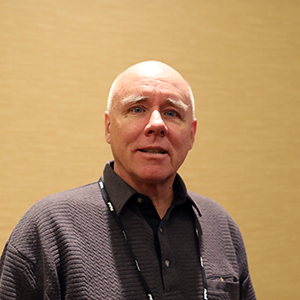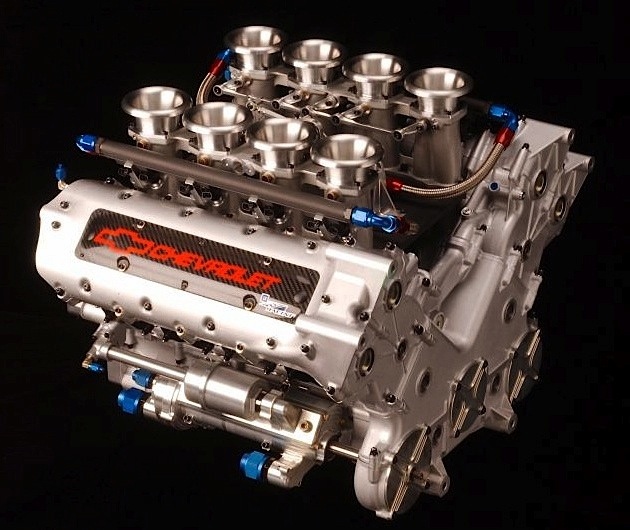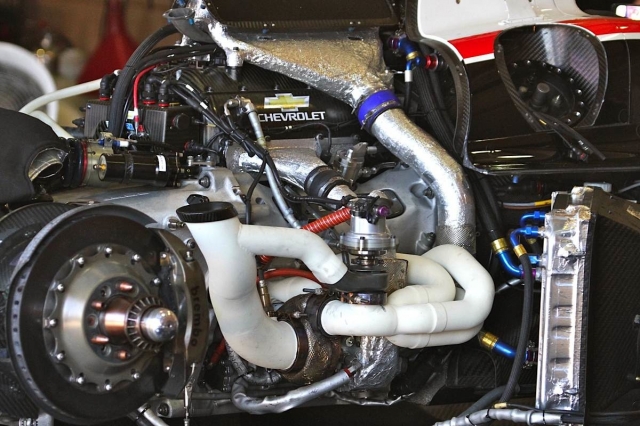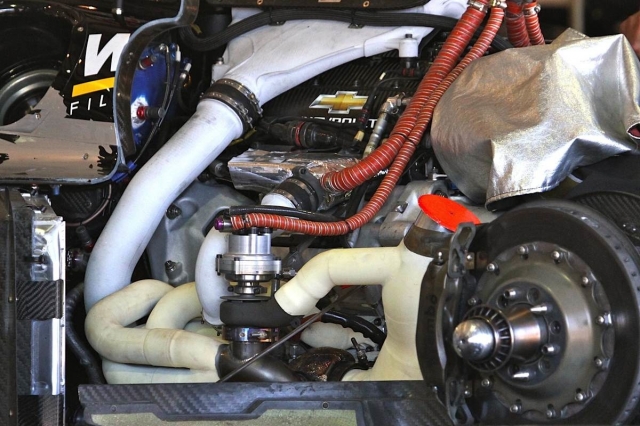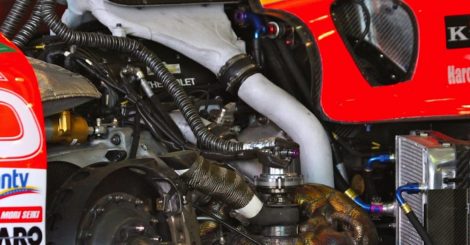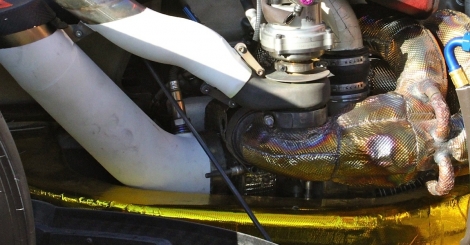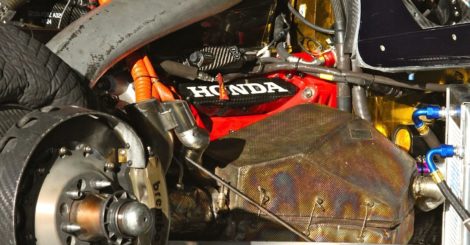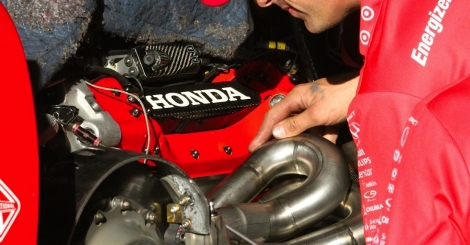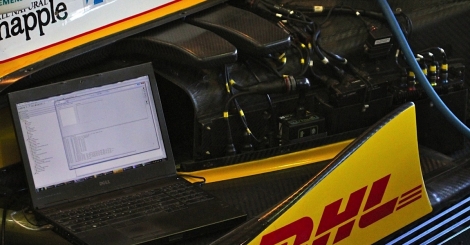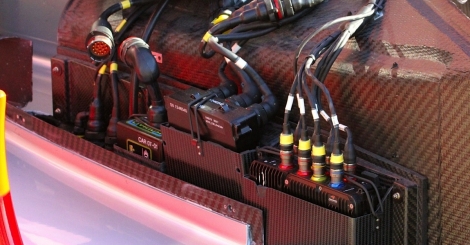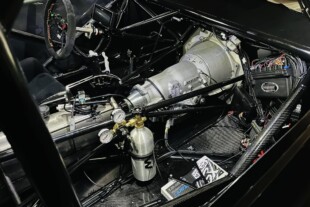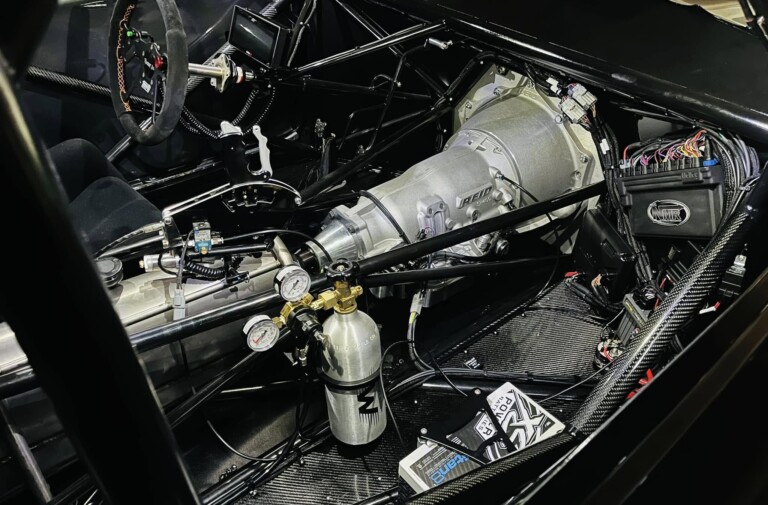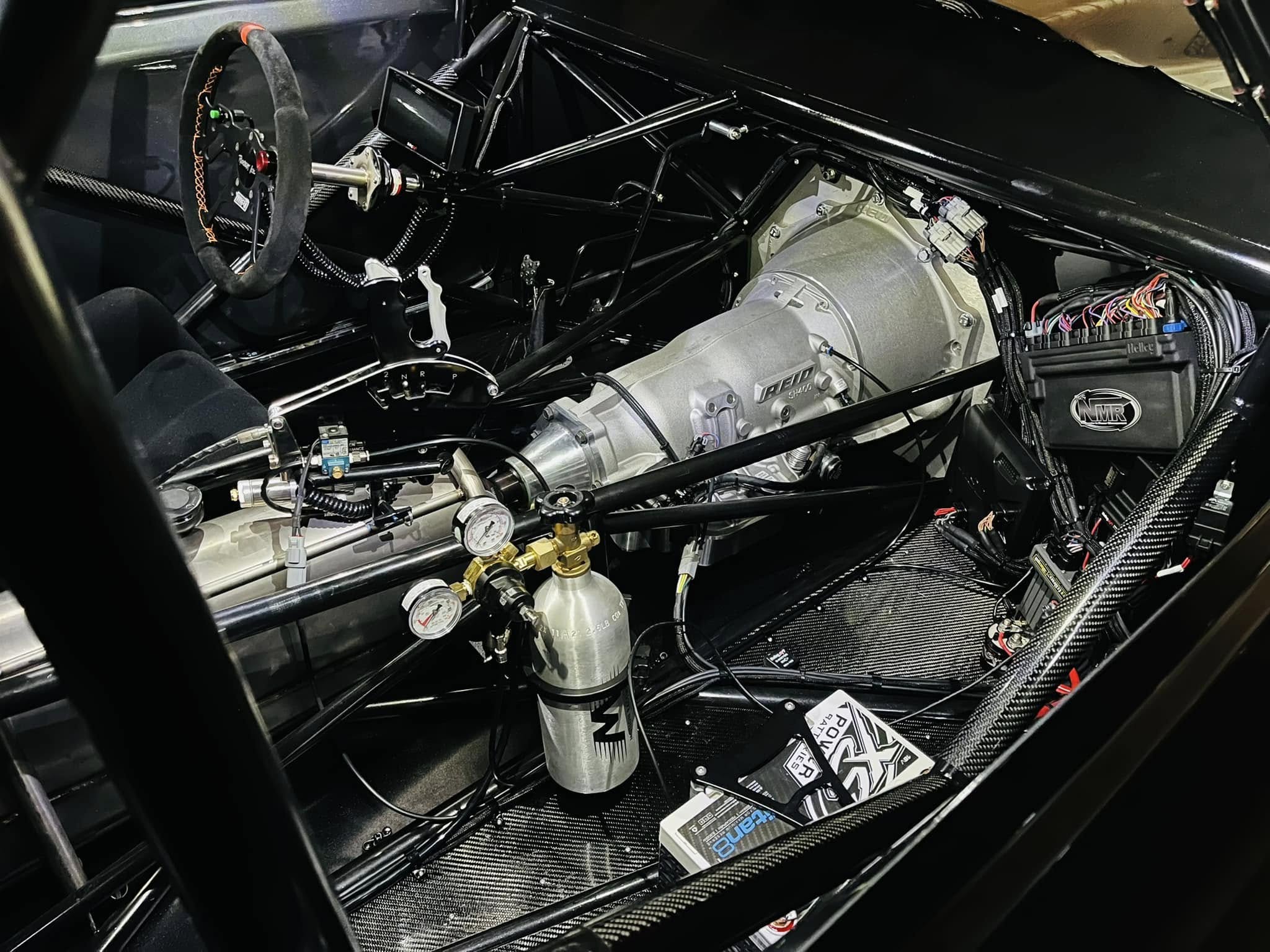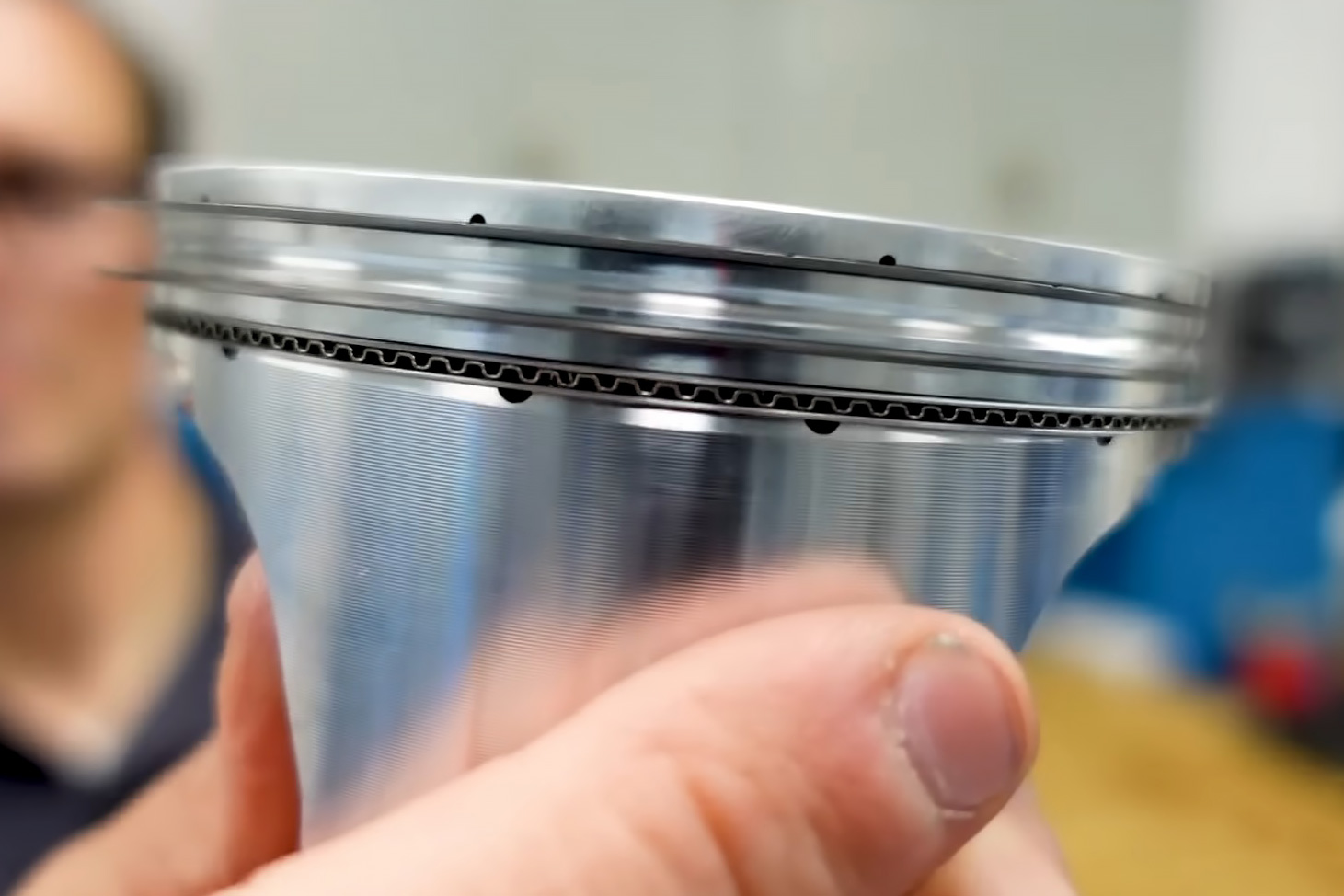 Following two consecutive manufacturer’s championships after returning as an engine supplier to the IndyCar Series, Chevrolet will face formidable new challenges in 2014. First, there’s a new spec turbo from Borg-Warner that Chevy and Honda — the only other engine supplier to the series — must adapt to their respective platforms. Then all the engines will have to last 2,500 miles — up from 2,000 miles in 2013 — before a team can change one without penalty. Finally, Chevy and its engine-development partner Ilmor will have laundry list of possible engine changes to consider as IndyCar opens up the homogolation process.
Following two consecutive manufacturer’s championships after returning as an engine supplier to the IndyCar Series, Chevrolet will face formidable new challenges in 2014. First, there’s a new spec turbo from Borg-Warner that Chevy and Honda — the only other engine supplier to the series — must adapt to their respective platforms. Then all the engines will have to last 2,500 miles — up from 2,000 miles in 2013 — before a team can change one without penalty. Finally, Chevy and its engine-development partner Ilmor will have laundry list of possible engine changes to consider as IndyCar opens up the homogolation process.
“What can be changed? There are quite a few options,” Will Phillips, vice president of technology for IndyCar, said during a press conference at PRI last December
Both Chevy and Honda can resubmit cylinder heads with different valve angles, port locations and shapes, spark-plug and fuel-injector locations, combustion chamber shape and other details. The induction system and turbo ducting can also be modified, camshaft specs can be altered and the connecting rods can be changed. For the next two years, only connecting rods will considered for homogalation, although there are some components such as wastegates, spark plugs and valve springs that are always open for consideration.
Another challenge for both Chevy and Honda will be a new points systems for the manufacturer’s title. Last year Chevy won the crown at the last race of the season when both engine suppliers came to the California 500 at Fontana tied in points after each scored nine wins during the season. When Will Power won Fontana, the title went to Chevy. For 2012, Chevy captured the manufacturer’s crown with 11 victories in 15 races, but Honda won the prestigious Indy 500.
Other Chevy IndyCar Engines
Chevy badges have been found on the cam covers of two previous IndyCar engines. The first was a development by Ilmor in the mid-’80s for the old CART series. That 2.65-liter turbo V8 won more than 70 races between 1986-’93 before Chevy dropped out. When the IRL was launched to compete with CART, Oldsmobile introduced a 4.0-liter quad-cam engine. In 2002 that engine eventually morphed into a 3.5-liter Chevy when the Olds brand was discontinued. When Toyota and Honda introduced dedicated race engines under new rules in 2003, Chevy brought out a Gen IV version based on an existing Cosworth design. Chevy then ended its IRL participation in 2005.
“We are changing the way the engine manufacturers points are allotted,” affirms Phillips. “Rather than making it a win or lose situation and the manufacturers trading wins, there will be bonus points for reliability and sweeping the podium.”
The Chevy titles marked the first time any other engine supplier had claimed the crown since 2003 (Honda became the sole engine source for all IndyCar teams in 2007). When IndyCar announced new engine rules for the 2012 season that eliminated the 3.0-liter naturally aspirated V8 in favor of a 2.4-liter (later changed to 2.2-liter) turbocharged V6 format, Chevrolet officials were attracted to the prospect of racing engines that were more consumer relevant.
In 2010, Chevy entertained proposals from engine builder Ilmor, which had earlier partnered with Honda to develop its soon-to-be-extinct IndyCar V8. Chevrolet officials saw a potential consumer connection at the time as GM was introducing more engines with direct injection, a technology IndyCar rules allow in conjunction with conventional port injection. Also, IndyCar races with E85 fuel, another heavily promoted feature in GM’s flex-fuel vehicle line.
Tom Stephens, then GM’s global product boss, said, “Racing is one of the best ways to showcase what we can do.” Mark Kent, GM director of racing, further explained at the time: “Turbo-charging, direct injection and the use of E85 are all the technologies that we’re using in the street. So it’s a great opportunity for us to take the learning at the racetrack and apply it to our street car.”
Honda wants it own engine
The Chevy-Ilmor reunion actually started in late 2009 when Honda Performance Development (HPD) quietly served notice it would build the next Honda-branded IndyCar engine totally in-house after working with Ilmor since 2002 on Indy V8 engines. Fortunately, Honda also wanted competition after being the sole supplier to IndyCar teams for most of those years.

Chevy’s racing history at Indy dates back to the Chevrolet brothers racing at the Brickyard about the same time Louis Chevrolet was designing the first Chevrolet car. When Louis sold his interest in the company in 1915, he continued racing at Indy, finishing as high as seventh. (GM photo)
“They were supportive of us continuing in the IndyCar business,” says Steve Miller, president of Ilmor Engineering, Ltd., which developed the new engine in the United Kingdom.
Ilmor had never made a V6 engine and admits the biggest challenges of the new format revolved around direct injection and E85 fuel.
“So we looked at complementing skill sets,” says Chris Berube, director of the Chevy racing program. “We took a young engineer out of the GM Powertrain organization to bring expertise to the program.”
While a number of engine parameters were set by IndyCar, suppliers had leeway in developing the package. Honda chose to run with a large, single turbo mounted inside the bellhousing — a strategy that had worked for Honda with its CART-era turbo V8 engines. Chevy and Lotus (which never made an impact in the series and soon dropped out) went with smaller twin turbos.
Left: An open view of the turbo on the right side of one of Chevy’s racecars from the 2012 season. Note the wastegate on top and hard elbow the exhaust has to make from the header collector into the turbine housing. Right photo is a view from the left side of a another car. Note the differences in packaging and insulation.
“There was a marketing desire to have twin turbos,” explains Berube, noting that factors such as packaging and the turbo hardware then played into the technical strategy of the decision.
Both Honda and Chevy are tight-lipped on exact details of the engine. IndyCar limits cylinder bore to 95mm, but that doesn’t mean either supplier will go that big since there’s also a 12,000-rpm limit. Another choice was cylinder bank angle. Rules allowed anything from 60 to 90 degrees. Lotus went with 84 degrees and Honda is around 75 degrees, based on media reports, but Chevy has been harder to pin down.
“The shape of the inlet and exhaust systems determined the bank angle,” is all that Miller hints.
Our durability dyno-test program is deliberately more aggressive than the running we do on the track. — Paul Ray, Ilmor Engineering
Manufacturers are probably running a 120-degree, 3-pin crankshaft, as an offset or split-pin crank to help even out the firing could leave the crankshaft vulnerable. Since E85 is used and there are relatively innocent allowable boost levels, compression ratio could be in the 11.5:1 to 12.5:1 range.
While direct injection is allowed, Chevy supports DI with conventional port injection.
“You have to do that because you can’t get enough ethanol into the engine through the direct injectors,” says Miller.

The single-turbo Honda package (shown on engine from 2012 season) was a little more complicated. Honda located the turbo inside the bellhousing. Note the wide insulated pipes that carry fresh air from the scoop to the bellhousing while the center carbon-fiber plumbing guides the compressed air to the intake manifold. Also note that rules did require exhaust on both sides of the car, even with a single turbo.
“The direct-injection involves a series of fairly delicate compromises between good combustion and good breathing in the engine,” adds Paul Ray, president of the US-based Ilmor Engineering Inc, which manages the engine supplies for the IndyCar teams during the season. “The port injectors effectively operate at the same pressure as the DI injectors but inject fuel into the inlet port through a specially designed injector positioned directly above the inlet trumpet. The change to this type of injection system is very effective due to the vastly improved fuel atomization. Of course, a significant amount of fuel system calibration is then required to optimize the system across the broad operating range of the engine.”
Addressing the rules
Engine suppliers are required to run a spec ECU from McLaren but they develop their own calibrations.
“The engine rules also allow us to create 2-sets of exhaust systems per race season so a significant amount of computer modeling and dyno time is spent experimenting with different exhaust system configurations,” says Ray. “Again, as soon as an exhaust system is identified as a performance increase, and it may be for an improvement in top-end power or improved mid-range performance. Unfortunately the two rarely go together, and we are back on the dyno and track to re-optimize the entire fuel system calibrations. Fuel and spark calibration, boost control, drivability and fuel consumption are very important to us so there is a never ending push to improve the engine performance from race to race.”
Two more views of the Chevy on 2013 cars. Note the extensive efforts to manage heat from the exhaust and turbo.
Chevy was required to run a pair BorgWarner EFR6578 turbos during the first two seasons. Rules allowed swapping A/R ratio, depending on the type of track.
Next year, both Honda and Chevy will run the Borg Warner 7163 turbo as there was controversy at times over some tech issues and parity.
Honda also had heat-management issues to address.
“We’ve mandated twin turbos for 2014,” explains Phillips. “One of the things we’ve been through and learned how difficult it is: matching the four different levels of boost between a single and twin turbo is virtually impossible. You can’t do it. We’ve tried and had various arguments over that process. So, twin turbos for everyone in 2014.”
The boost levels will remain the same for 2014: 1.55 bar/22.5 psi for road courses, 1.4/20.3 for ovals, 1.3/18.9 for super speedways and 1.6/23.2 for the allowable periods of “push-to-pass” on road courses.
Chevy maintains a pool of 45 engines for its eight teams, although many of those teams field multiple cars and some race only at the Indy 500. Again, the duty cycle is being extended to 2,500 miles before an engine can be replaced, or else there will be a penalty. Engines are maintained by Ilmor’s Michigan facility where dedicated teams disassemble the engines as they return from the teams.
All teams runs the same McLaren ECU but the engine suppliers handle the calibrations.
“They’re very attuned to taking engines apart, so they know if this engine looks a little different or that one, after it’s been torn down,” explains Ray. “And then those guys will also be responsible for cleaning the parts, and then they go through nondestructive testing.”
Various components — such as the oil pumps or cylinder heads — will go off to subassembly sections for inspection and rebuild.
“And then the engines come back out of those particular subassembly areas,” adds Ray. “We have these large trolleys where effectively an engine kit will be put together.”
The engine number is basically dedicated to the block. After each rebuild it may have a different crank, cylinder heads and more.
“A lot of the components have different life cycles,” says Berube. “Some, we actually say to use until it’s cracked or there are certain parts that you wouldn’t necessarily throw away until you really see that there’s a problem. But most things – a connecting rod for example – you know, it has a finite life. And because we track every single mile the engine ever runs, we know exactly when those rods are going to need to be replaced.”
Exceptional durability
From a durability standpoint, Chevy and Ilmor says 2013 was exceptional.
“We had no surprises like those at Long Beach in 2012 (Chevy had to pull all 11 engines from its teams before the race following a testing failure). We have improved our component level and dyno-test procedures to really focus on the durability aspect,” says Ray. “Our durability dyno-test program is deliberately more aggressive than the running we do on the track to attempt to identify problems before we ever see them trackside.”
While the Ilmor-built engines have certainly provided Chevrolet with a winning image on the track, the measure of any factory-sponsored motorsports program is dependent on leveraging that success to the showroom — either through brand recognition that translates into increased sales or technology that can be used to improve the production vehicle and attract more consumers. Direct injection certainly offers a greater opportunity to improve production engine manners as well as performance — the fuel system is a major focus on the track — especially where rules permit.

IndyCar VP of technology Will Phillips, right, tells the media that all teams will be required to run twin BorgWarner 7163 turbos in 2014. Seated on the left is Derrick Walker, IndyCar president of competition.
“DI continues to provide opportunities for increased performance. With the way the IndyCar rules are written, major changes to the design of the engine are not permitted but the fuel system was allowed to be updated in both 2013 and for 2014,” explains Ray. “So, it has been the subject of high developmental effort. Working closely with our partner Hitachi, we had the chance to develop alternate spray-form injectors to make reasonable incremental gains year over year, particularly in combination with the port injection. Increasing the flow of the DI pumps had its challenges but these were overcome early in 2013.”
What else has Chevrolet learned?
“We’ve learned a lot about heat management,” says Kent. “I think we’ve learned a lot about friction. We’ve learned a tremendous amount about direct-injection, and we’re learning about boosting. So our learnings back in this program are far beyond direct-injection specific. We’re learning about every element of the engine.”
“The greatest parts of any racing program are always the people,” echoes Ray. “While we develop new and interesting technologies for race engines it is, more often than not, the developmental methodologies, the drive for perfection, the sense of urgency and team spirit that is most powerful takeaway for the Chevrolet engineers on the program.”


